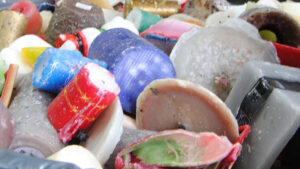Lamps and bulbs
Today, only pollutant-free/low-emission light sources are generally in circulation. Modern LED lamps are basically electronic devices. In the past, however, there was still a whole range of pollutant-containing illuminants, especially mercury compounds were used as illuminants. Quicksilver can cause damage to the brain and nerves or the metabolism. Low-pressure sodium lamps contain elementary sodium, which reacts heavily with water.

Use energy saving lamps to save electricity and money. Ask your reseller which types are appropriate for your use. Take a look on the directions on www.shop-green.lu.
Non-contaminated lamps are shredded and metal and glass are recycled. Lamps containing quicksilver are treated in a closed installation to recycle all components inclusive quicksilver. Quicksilver in products containing quicksilver is retrieved by distillation. LED lamps are treated and recycled like electronic devices.
Product receiver with further information on recycling: Indaver Relight

The collection of non-commercial electrical / electronic equipment takes place via the collection system for electrical / electronic waste ecotrel.
Important danger warnings

The dripping test tubes on hand and surface for "caustic"

The skull for toxic products

Lamps and bulbs
Today, only pollutant-free/low-emission light sources are generally in circulation. Modern LED lamps are basically electronic devices. In the past, however, there was still a whole range of pollutant-containing illuminants, especially mercury compounds were used as illuminants. Quicksilver can cause damage to the brain and nerves or the metabolism. Low-pressure sodium lamps contain elementary sodium, which reacts heavily with water.

Use energy saving lamps to save electricity and money. Ask your reseller which types are appropriate for your use. Take a look on the directions on www.shop-green.lu.
Non-contaminated lamps are shredded and metal and glass are recycled. Lamps containing quicksilver are treated in a closed installation to recycle all components inclusive quicksilver. Quicksilver in products containing quicksilver is retrieved by distillation. LED lamps are treated and recycled like electronic devices.
Product receiver with further information on recycling: Indaver Relight

The collection of non-commercial electrical / electronic equipment takes place via the collection system for electrical / electronic waste ecotrel.








